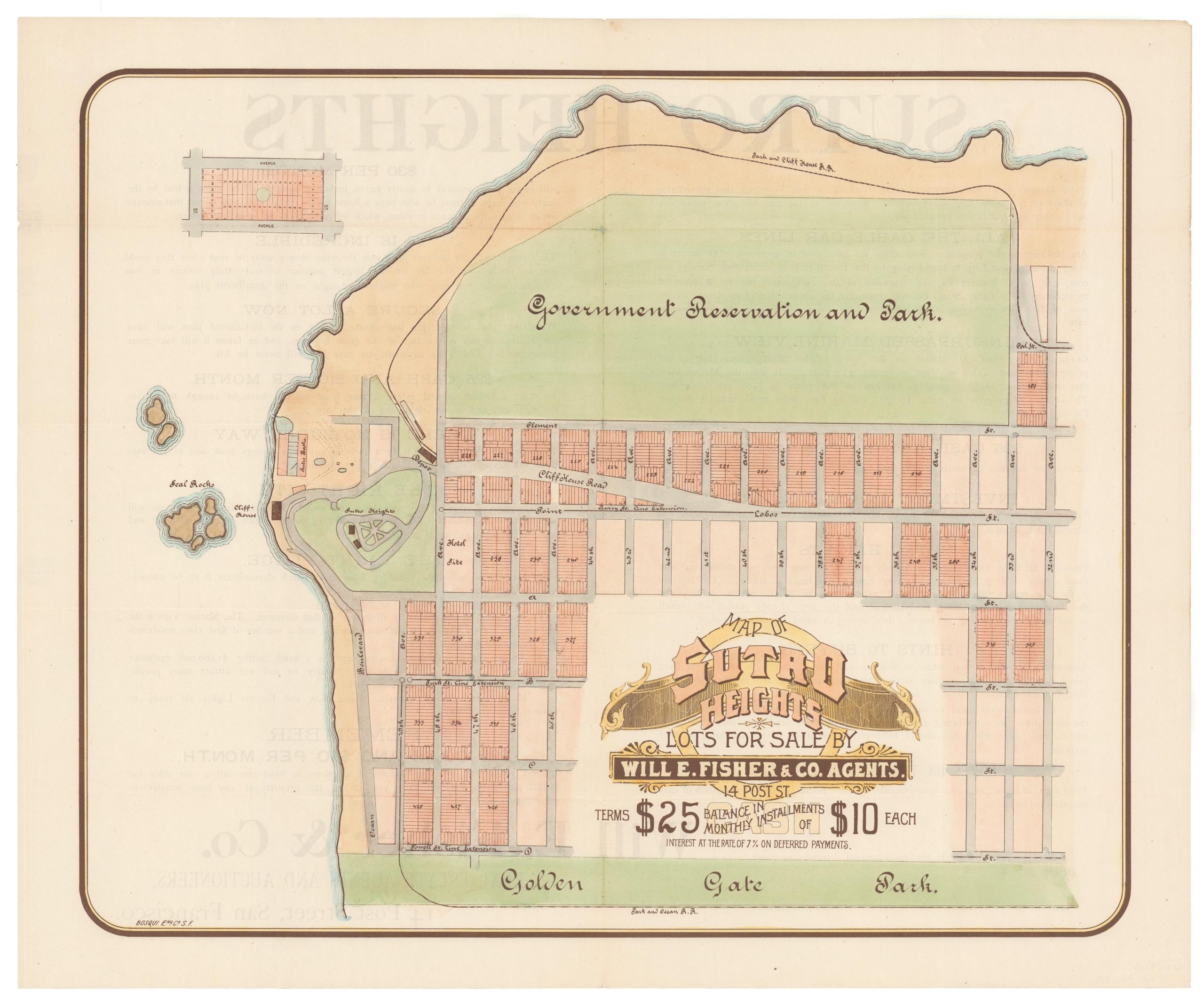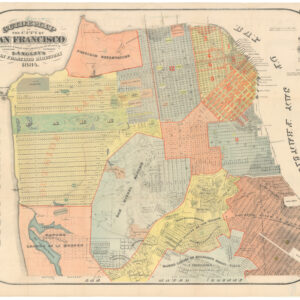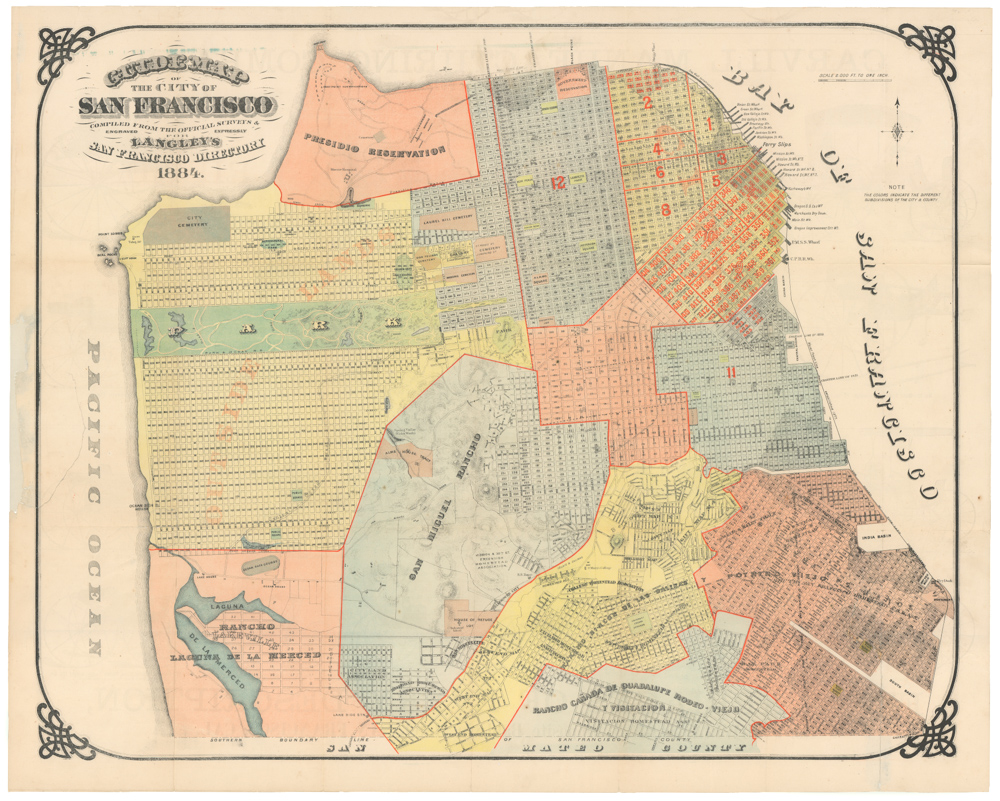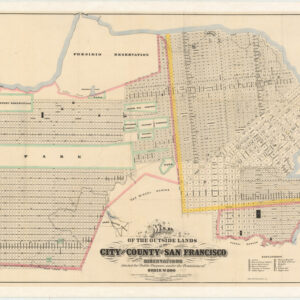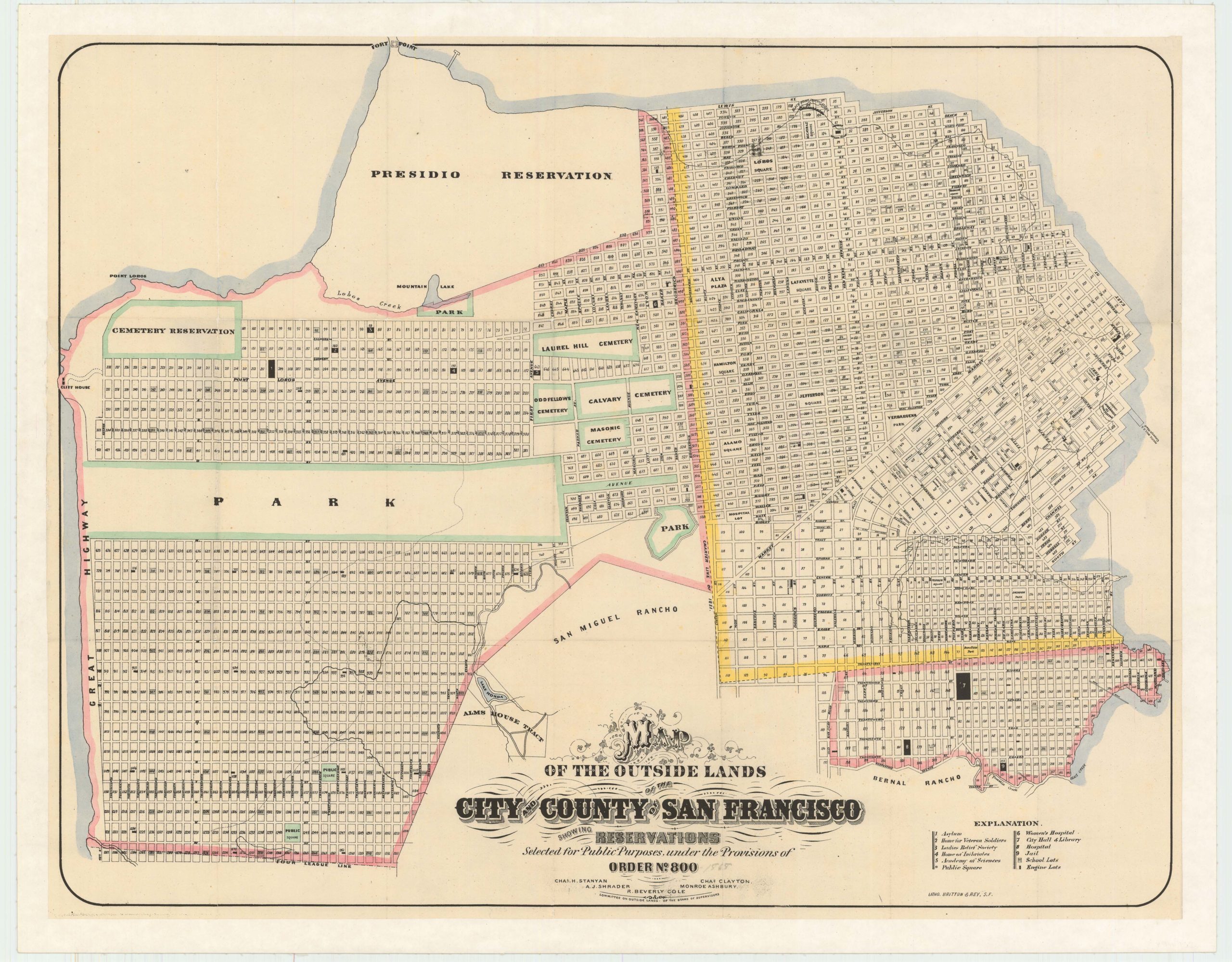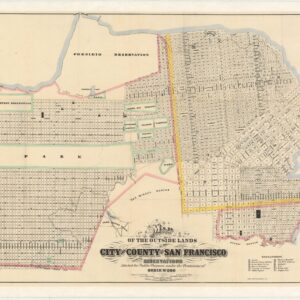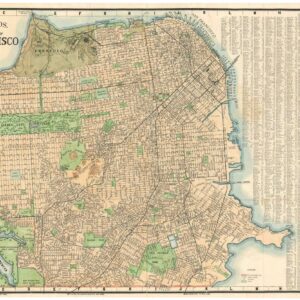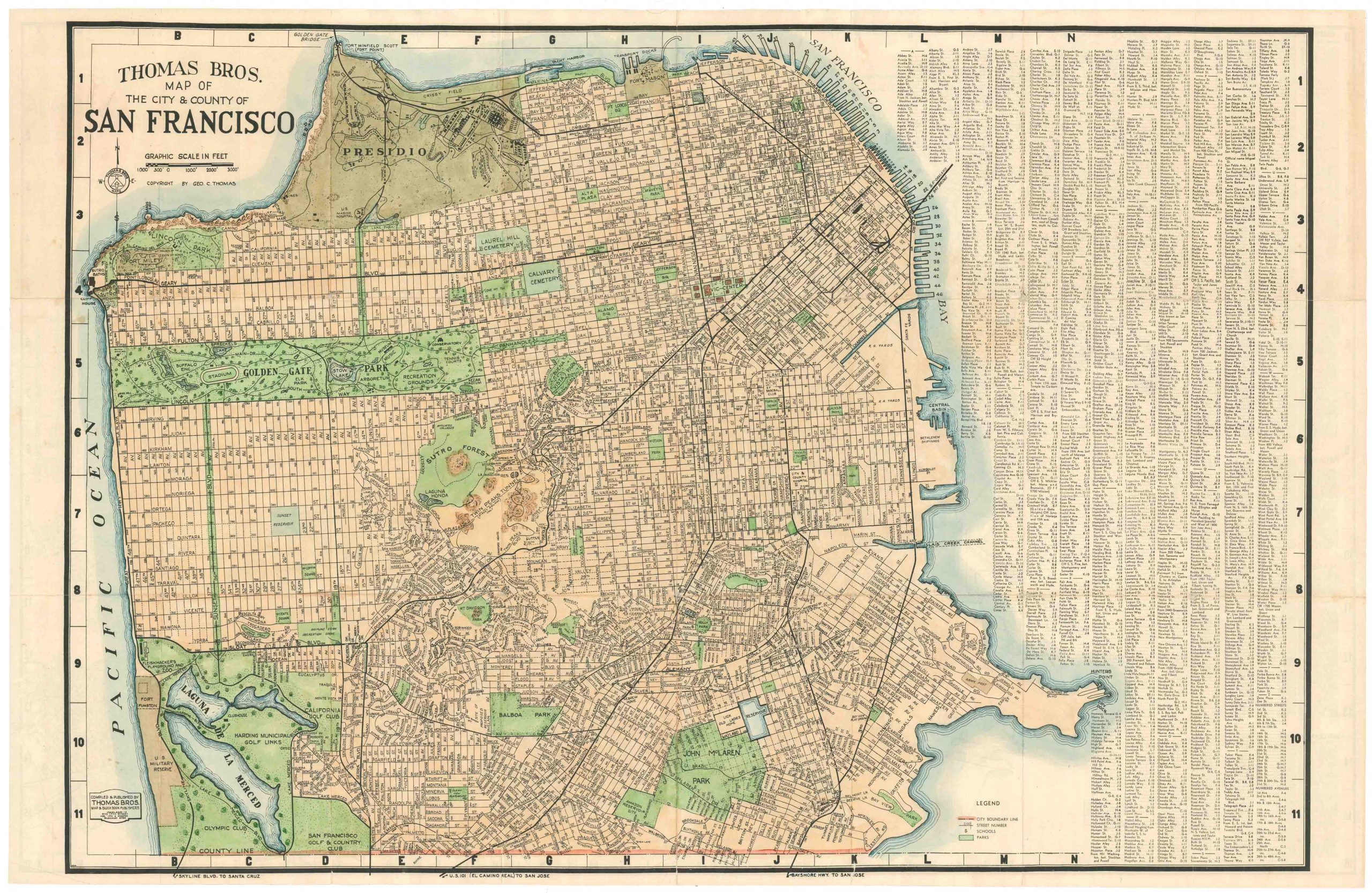Incredible photographs from the early days of San Francisco.
[Photographs of early San Francisco]
Out of stock
Description
A remarkable set of three albumen photographs from the early decades of San Francisco focusing on Nob and Russian Hills. The photographs do not include any identifying information, but from the context, they were likely taken by famed photographer Carleton E. Watkins sometime around 1862. The photographs were taken from about a third of the way up the western slope of Telegraph Hill. Two of the images are continuous; the third seems separated by one missing overlap.
Photographs from this early date are scarce on the market. An important chronological clue is found in the continuous images, which show the eastern slope of Russian Hill, from Lombard Street to the waterfront. On the right side of the image, where Fisherman’s Wharf is today, we see a sizable light-grey section devoid of shrubbery. This bluff was known as White Point, and the light-grey represents a series of high white sand dunes, long since vanished. In 1864, the Bay Shore and Fort Point Road Company completed a toll road along the waterfront around this point, complete with a toll house and gate. There is no indication of even the initial construction of a shoreline road in our photographs, dating them to before 1863 at the latest.
The photographs show how much San Francisco’s natural topography has changed, or more precisely, has been altered, over time. The water line is located at present-day Francisco Street. It has since been extended by over three blocks, meaning that much of Fisherman’s Wharf, including Ghiradelli Square, sits on landfill. Inland from the shore, we see an open area: Washington Square. Mayor John Geary declared it a public space in 1850 and ordered prisoners to grade the land and water the grass.
Filbert Street borders Washington Square to its north and Union Street to its south. One block uphill is a building with a large painted sign that says “Union St. Livery Stable.” Liveries were the centralized parking garages of the day – communal stables where residents could house their horses within the city. Parked out front are several carriages. Another likely livery is found one block south on Green Street, where on sharp grade we see several more carriages, one complete with driver and horse. The level of detail in the photographs is such that we see one carriage trotting along Jones Street, as well as clothes hanging on a line, drapes half-drawn inside windows, store signs, footpaths, and more.
Up on the ridge line of Russian Hill, the photographs show how the top of each street was graded differently, differences that remain today. On the upper slope of Lombard Street, we see the first indications of a curvy path before the now-famous curved section was built. At the top of Union Street, in contrast, the city has cut away a giant section of the rocky hillside to flatten its crest and make travel up and over the hill easier. One block to the south, Green Street has been left uncut, and indeed today, there are steps here instead of a through street.
Several buildings are identifiable on Russian Hill. At the top of the hill, on the upper left side of the composite image, the Feusier Octagon House, built in 1858, peaks out from behind the Green Street ridge. Other octagon houses are visible as well, as are several schools. At the top of Lombard, we can make out one side of the Lombard Street Reservoir, built in 1858. Further down the ridge, we find some of San Francisco’s oldest houses, including the former house of assassinated newspaper editor James King of William, and Humphrey’s Castle, built in 1854 by William Squires Clark.
The final, separate photograph looks westward up Nob Hill from Chinatown, with prominent landmarks like Grace Church and the old Washington Grammar School. As with the other photographs, most of the buildings seen here would have been destroyed in the 1906 earthquake and fire, but one of the survivors of that disaster was the Old St. Mary’s Cathedral in Chinatown, standing near the center of the image. The other church visible in the photo, to the left (south) of St. Mary’s, is likely the original Notre Dame des Victoires, which unlike St. Mary’s, had to be completely rebuilt after the 1906 earthquake and fire.
Another aid in locating the photograph is the Broadway Brewery in the foreground, built in 1862. Together with other evidence mentioned above, its presence suggests a date of 1862/3 for these photographs.
Cartographer(s):
Carleton E. Watkins (1829–1916) was one of the most famous American photographers of the 19th century. He moved to San Francisco in 1851, one of tens of thousands looking to strike it rich in the Gold Fields of California. When that venture did not pan out, Watkins eventually found photography, and his legacy includes essential images of San Francisco, Yosemite, and the American West.
Condition Description
Albumen photographs. Some toning to mounts and slightly to images; very good.
References
We would like to thank Nick Wright for his expert help analyzing these images.

